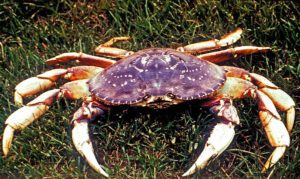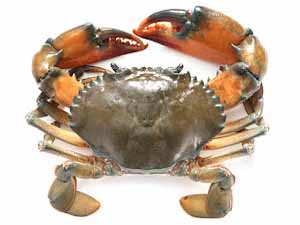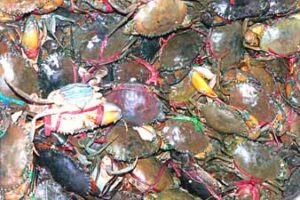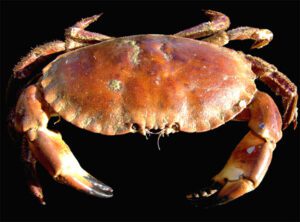The Blue Swimming crab is a large sized crab found in the intertidal estuaries of the Indian and West Pacific Oceans. It is also found as a Lessepsian migrant in the eastern Mediterranean Sea.
This crab is also known by many other different names such as Blue crab, Blue Manna crab, Blue Swimmer crab, Flower crab, Sand crab, Alimasag in Tagalog and Rajungan in Indonesian language.
The name ‘Flower crab‘ is used in east Asian countries, while the other names are used in Australia.
It is widely distributed in eastern Africa, Southeast Asia, Persian Gulf, New Zealand, Indonesia and Australia. Read some more information about this crab species below.
Blue Swimming Crab Characteristics
The Blue Swimming crab has a rough to granulose carapace. The legs laterally flattened to variyng degrees, last 2 segments of last pair paddle-like.
The females have a duller green/brown color with a more rounded carapace. But the males are bright blue in color with white spots and with characteristically long chelipeds.
The carapace of these crab can be up to 20 cm wide. Photo and info from Wikipedia.

Diet
The Blue Swimming crabs are feed on a wide variety of sessile and slow moving benthic invertebrates. They are almost exclusively carnivorous, rarely consuming plant material.
Breeding
The Blue Swimming crabs become mature within their 1 year of age. Their life cycle is dependent on estuaries as the larvae and the early juveniles use these habitats for growth and development.
The female crabs move into shallow marine habitats prior to hatching. And they release their eggs there and the newly hatched zoea larvae move into estuaries.
Special Notes
The Blue Swimming crab is commercially very important throughout the Indo-Pacific, where they may be sold as traditional hard shells, or as ‘soft-shelled’ crabs.
This crab is considered a delicacy throughout Asia. It is highly prized, and it’s meat is almost as sweet as Blue crab.
It is heavily and almost exclusively fished for meat consumption in the Persian Gulf. And the females are sold at very higher prices than the males.
The Blue Swimming crab is mainly collected by artisanal traps, beach seines, cylindrical wire traps, trawls, pots, folding traps, drop nets, hop nets and crab gill nets. However review full breed profile of this crab in the table below.
| Name | Blue Swimming |
| Kingdom | Animalia |
| Phylum | Arthropoda |
| Class | Malacostraca |
| Order | Decapoda |
| Family | Portunidae |
| Genus | Portunus |
| Species | P. pelagicus |
| Binomial Name | Portunus pelagicus |
| Other Names | Blue crab, Blue Manna crab, Flower crab, Sand crab, Alimasag in Tagalog and Rajungan in Indonesian language |
| Breed Purpose | Food |
| Special Notes | Commercially important through the Indo-Pacific, considered a delicacy throughout Asia, highly prized, the meat is almost as sweet as Blue Crab, it is heavily and almost exclusively fished for meat consumption in the Persian Gulf, the females are generally sold at higher prices than the males, used mainly for food |
| Breeding Method | Natural |
| Climate Tolerance | Native climate |
| Body Color | The males are colored with blue markings, and the females are dull green |
| Rarity | Common |
| Availability | Indo-Pacific |






